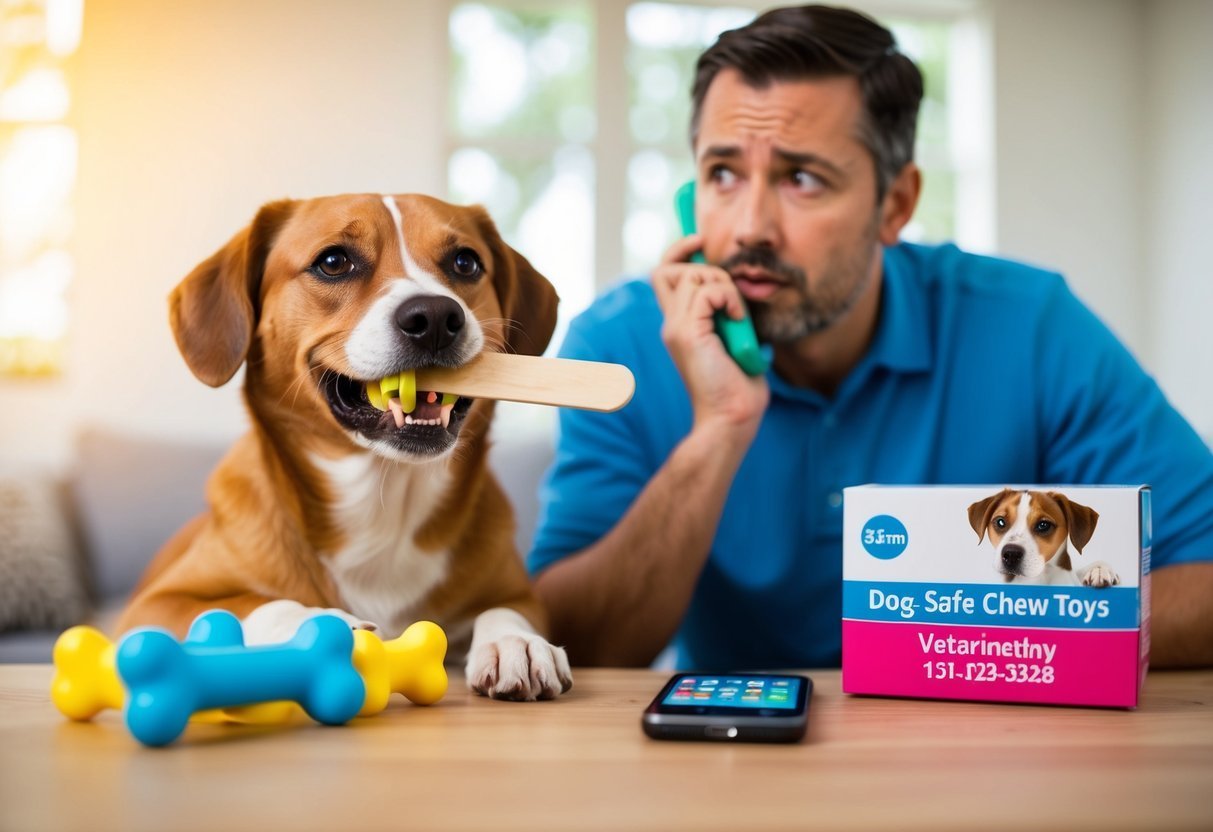If your dog just had a taste of a popsicle stick, you might be feeling worried.
Knowing the quick steps you can take to keep your furry friend safe is important.
Knowing what to do can help you stay calm and act quickly in this situation.
Many dog owners face this issue without knowing the potential risks involved.
Keeping your dog healthy and happy is your top priority, so understanding how to handle this can really help you out.
Check mouth for stick fragments
First, stay calm if your dog eats a popsicle stick.
Your next step is to check their mouth.
Look for any visible stick fragments lodged between their teeth or stuck in their gums.
Gently pull back their lips to get a good view.
If you see any pieces, you can try to remove them carefully.
Be cautious and avoid pushing fragments further in.
If the stick is not easily reachable, don’t force anything.
Trying to grab it could hurt your dog.
Instead, watch for signs of distress or choking.
Pay attention to your dog’s behavior.
If they seem uncomfortable or are pawing at their mouth, it’s essential to act fast.
Should you find any serious issues or feel unsure, contact your veterinarian right away.
They can provide the best advice tailored to your situation.
2) Offer water to wash it down

If your dog eats a popsicle stick, giving them water can help.
Water can assist in moving the stick through their digestive system.
Start by offering your dog a bowl of fresh water.
Encourage them to drink, especially if they seem anxious or upset.
This can soothe them and keep them hydrated.
You don’t need to force them to drink.
Just make it available.
If your dog is still chewing on the stick, you can gently distract them with a toy or a tasty treat to help.
Keep an eye on your dog after they drink.
Watch for any signs of discomfort, like vomiting or difficulty breathing.
If your dog shows any unusual symptoms, contact your vet immediately.
It’s always a good idea to keep water handy.
This way, if accidents happen, your dog will stay hydrated and healthy.
3) Monitor for discomfort

After your dog eats a popsicle stick, keep an eye on them for any signs of discomfort.
Watch for changes in their behavior or unusual symptoms.
If your pup seems restless, whines, or appears more anxious than usual, these can be signs something might be wrong.
Common symptoms to look for include vomiting, diarrhea, or difficulty breathing.
If you notice any of these, it’s best to act quickly.
Take your dog to the vet if their stomach appears swollen or if they seem to be in pain.
Don’t wait too long, as prompt care is important.
Monitoring your dog can help catch any issues early.
Make sure they’re drinking enough water, too, as staying hydrated is key.
Being aware of your dog’s usual habits will help you spot any changes.
Trust your instincts; if something feels off, it’s okay to seek veterinary advice.
Call your vet for advice
If your dog eats a popsicle stick, the first thing to do is call your vet.
They can give you the best advice based on your dog’s size and health.
You might be tempted to wait and see if your dog shows any signs of distress.
However, it’s safer to get professional input right away.
Your vet knows the risks involved.
When you call, be ready to provide details.
Let them know when your dog ate the stick and how big your dog is.
This can help them assess the situation quickly.
Your vet might suggest monitoring your dog for signs like vomiting, coughing, or lethargy.
They can also tell you if you should bring your dog in for an exam.
In some cases, the vet may recommend inducing vomiting, but this should only be done under their guidance.
They will know the safest steps to take to help your dog.
Always trust their expertise in these situations.
5) Watch for bowel issues
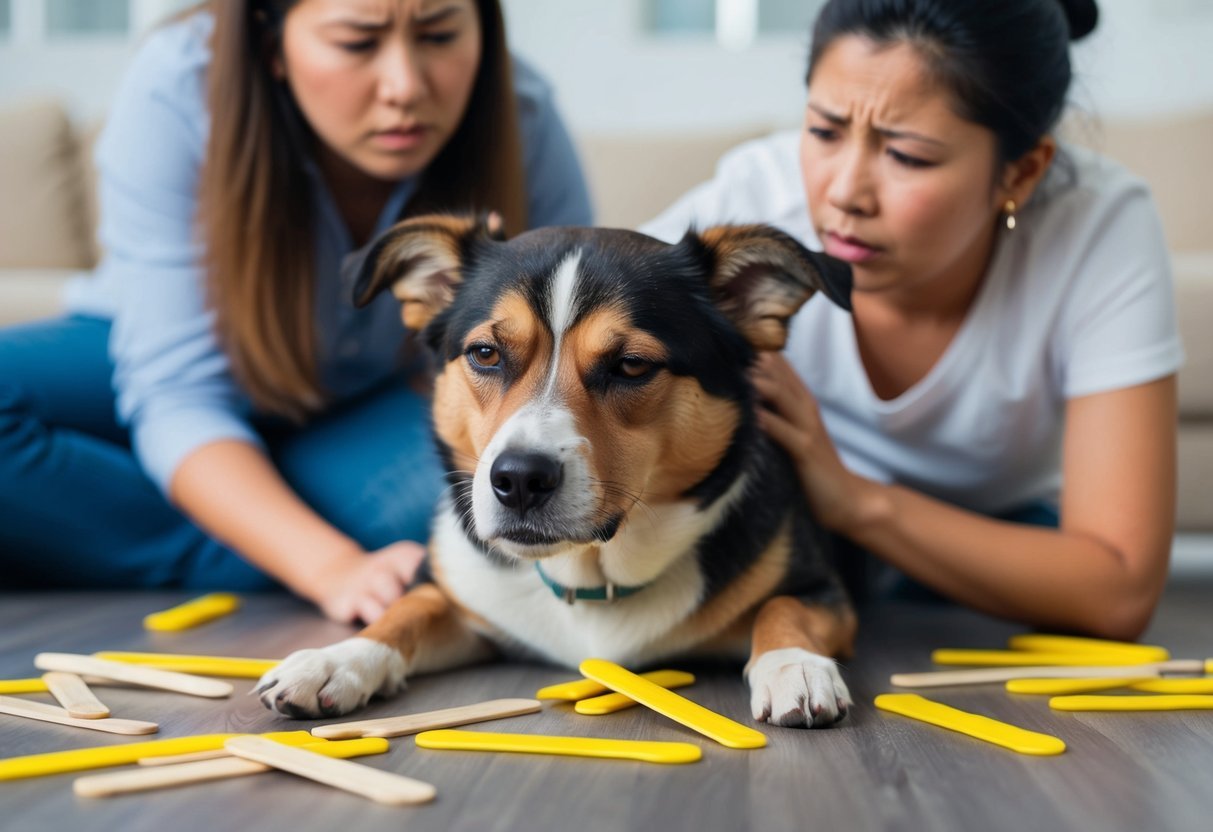
After your dog eats a popsicle stick, keep an eye on their bowel movements.
It’s important to monitor if they are passing stool normally.
Look for signs like straining, hard stools, or if your dog seems uncomfortable.
If your dog hasn’t pooped in a day or two, this could be a warning sign.
You should also watch for changes in appetite or energy levels.
If your pup isn’t eating or seems lethargic, it could indicate a problem.
Some dogs might experience diarrhea if a piece of the stick causes irritation.
Keep an eye on the consistency and frequency of their stool.
If you have any concerns about what you see, contact your veterinarian.
They can help determine if there’s a blockage or other complications.
Don’t wait too long, as timely care is important for your dog’s health.
Why Popsicle Sticks Can Be Dangerous
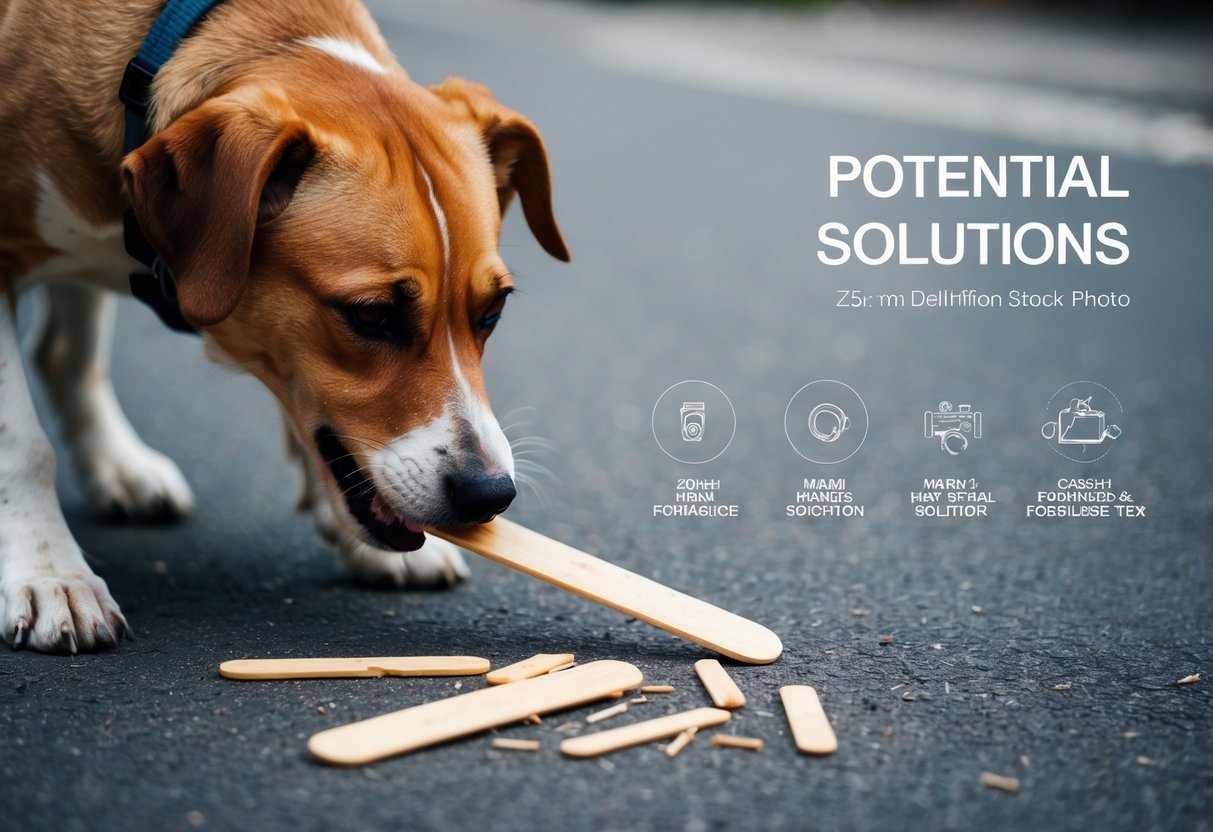
Popsicle sticks might seem harmless, but they can pose serious risks to your dog.
Understanding these dangers and recognizing the signs of distress can help you take quick action.
Potential Health Risks
Popsicle sticks can cause several health problems for dogs.
Choking is a major concern.
These wooden sticks are small enough to get stuck in your dog’s throat, blocking airflow.
If swallowed, the stick can also lead to intestinal blockages.
This happens when the stick gets lodged in the digestive tract, preventing food or waste from passing through.
Additionally, sharp edges can cause perforations in the stomach or intestines.
This can lead to severe internal injuries, which may require emergency surgery.
It’s vital to act quickly if your dog eats a popsicle stick.
Signs of Distress in Dogs
Watch for signs that your dog is in trouble after eating a popsicle stick.
Some common signs include:
- Coughing or gagging: This can indicate choking.
- Vomiting or retching: Repeated vomiting may suggest an obstruction.
- Lethargy: If your dog is unusually tired, it might be a sign of distress.
- Abdominal pain: If your dog is whining or doesn’t want to be touched, it could be indicative of pain.
If you notice any of these symptoms, contact your veterinarian immediately.
Quick action is crucial to ensure your dog’s safety.
How Vets Typically Handle These Situations
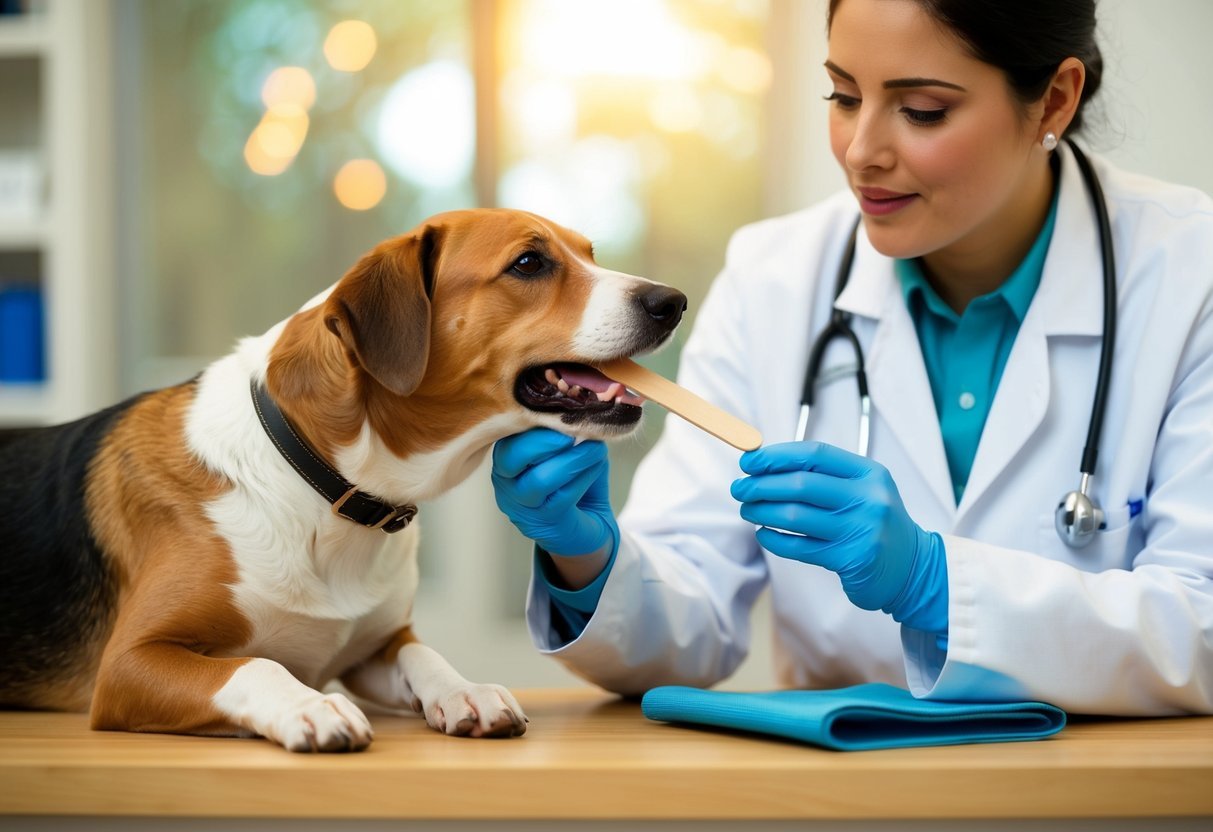
When your dog eats a popsicle stick, it’s important to act quickly.
Vets follow a set procedure to assess the situation and provide the best care for your dog.
Here’s what to expect when you visit the vet.
Initial Assessment
The vet will start with an initial assessment.
This involves asking specific questions about your dog’s age, breed, and weight.
You might also need to share details about what your dog ate, how long ago it happened, and any strange behaviors you’ve noticed, like pacing or vomiting.
This information helps the vet determine the level of risk.
Next, the vet may perform a physical exam to check for any signs of distress, such as swelling in the abdomen or difficulty breathing.
Depending on how your dog seems, the vet will decide on the next steps.
Treatment Options
After the assessment, the vet will discuss treatment options.
If your dog is showing signs of distress, they may need immediate care.
Possible treatments include:
-
Inducing Vomiting: If the popsicle stick was eaten recently, the vet might induce vomiting to prevent further issues.
-
Monitoring: If your dog seems stable, the vet may suggest monitoring your dog at home for symptoms like lethargy or loss of appetite.
-
Surgery: In more serious cases, the vet might recommend surgery to remove the item if it’s causing a blockage or injury.
Always follow your vet’s advice closely for the best outcome for your furry friend.
Preventive Measures For The Future
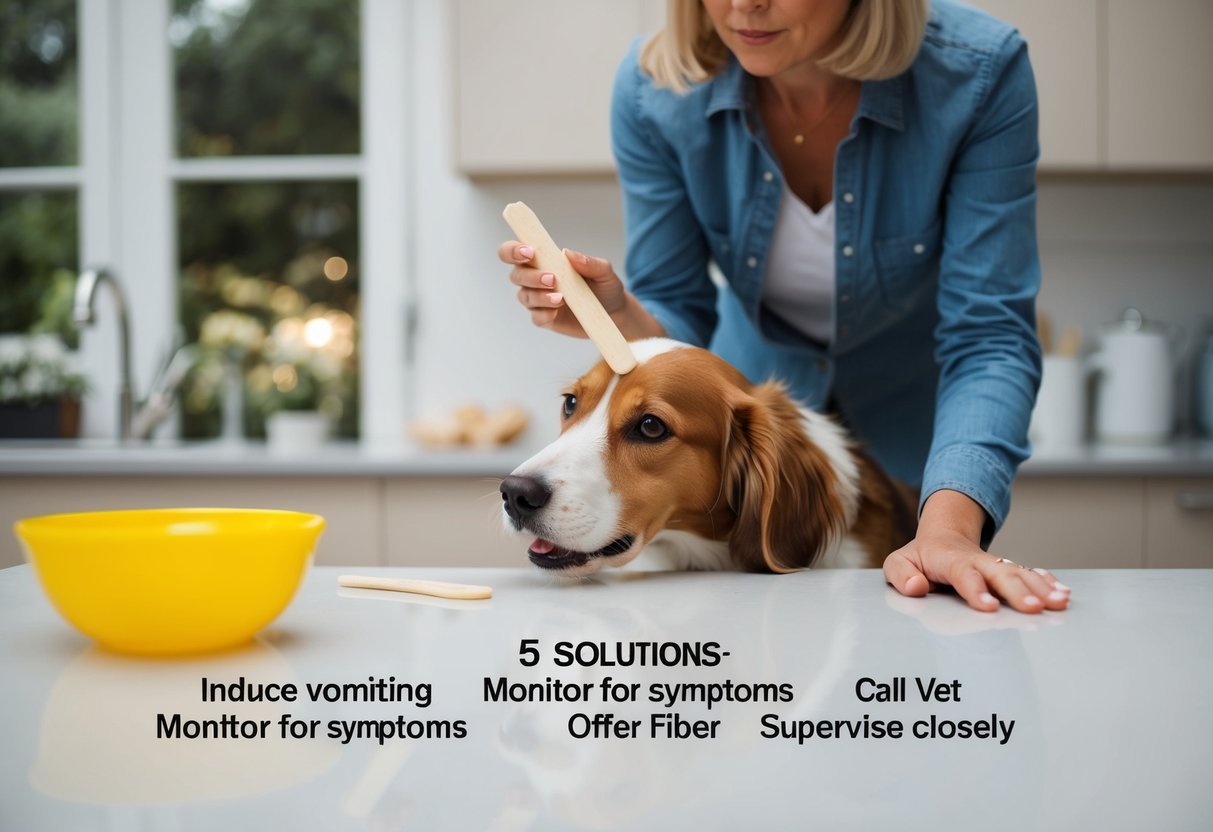
To keep your dog safe from eating popsicle sticks, consider these simple tips:
-
Supervision: Always watch your dog, especially during playtime. Keep an eye on what they pick up.
-
Designated Chew Toys: Provide safe chew toys. This will help satisfy their urge to chew without the risk of harmful items.
-
Clean Up: After outdoor activities, check your yard or play area. Remove any popsicle sticks or other debris.
-
Training Commands: Teach your dog commands like “leave it” or “drop it.” This can help you control what they put in their mouths.
-
Safe Treats: Offer healthier snacks that your dog loves. Chewing on dog-safe treats can distract them from unwanted items.
By following these steps, you can help prevent accidents in the future.
Keeping your furry friend safe is the priority!
Frequently Asked Questions

When your dog eats a popsicle stick, it’s natural to have questions.
Here are some common concerns and what you should know about the risks, signs of distress, and actions to take.
What are the risks of a dog eating a popsicle stick?
Popsicle sticks can be dangerous for dogs.
They can pose a choking hazard and may get stuck in the throat or intestines.
In some cases, they can even cause tears in the digestive tract, leading to serious health issues.
How can I tell if my dog is in distress after swallowing a stick?
Watch for signs like gagging, retching, or excessive drooling.
Your dog might also seem restless, refuse to eat, or have difficulty swallowing.
If you notice these symptoms, it’s important to seek help immediately.
What’s the best course of action if my dog just ate a popsicle stick?
First, check your dog’s mouth for any stick fragments.
Offer water to help wash it down and monitor for any signs of discomfort.
If you’re concerned, don’t hesitate to call your vet for advice on what to do next.
Is it common for dogs to pass swallowed sticks naturally?
Many dogs can pass small pieces of swallowed sticks without any issues.
However, if the piece is large or sharp, it might get stuck.
Always keep an eye on your dog and watch for any unusual behavior.
How long should I wait to see if my dog passes a popsicle stick?
It’s important to monitor your dog for at least 24 hours after ingestion.
If you don’t see signs that they’ve passed the stick or if they show any distress, contact your veterinarian for guidance.
Can anything be done at home to help a dog who’s eaten a popsicle stick?
You can start by offering water to help.
In some cases, your vet may suggest inducing vomiting with a safe method, like a 3% hydrogen peroxide solution.
Always check with your vet before trying this at home.

